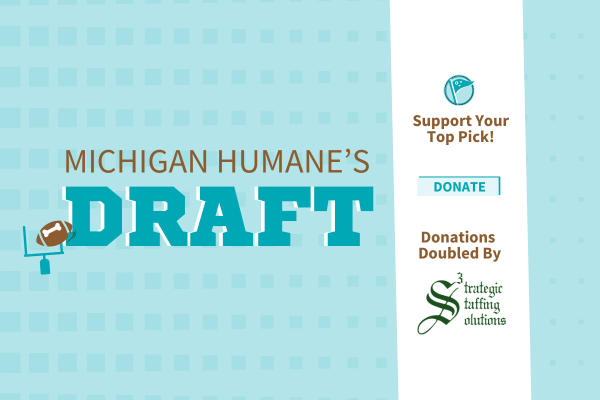Helping Your Dog Visit The Vet
<Back to Pet Owner Resource Center
For some dogs, visiting the veterinarian can be extremely stressful. Whether the dog had a bad experience in the past or just isn’t comfortable with the strange sounds and scents of the clinic, some dogs react inappropriately during their examination, growling snapping and even sometimes biting.
Here are some tips to help your dog have a positive experience during exams at the vet office.
Reward your dogs for good behavior
If your dog can be distracted by food rewards or praise or petting at the veterinarian’s office, this may be sufficient. Have the veterinary staff toss treats to your dog from a distance. They should not stare at your dog, lean over them, or try to pet or touch them. If your dog comfortably approaches them, you should reward them for their brave behavior.
Teach your dog to accept restraint by rewarding them with food or praise for remaining calm while you gently hold them and touch them in similar ways to those that will occur during examinations. You can reward them with delicious treats, or use clicker training to mark calm behavior (staying still, not whining, not struggling, etc.). Pretend to examine your dog’s ears, paws, skin, legs, tail, hips, head, mouth, abdomen, and muzzle. Avoid their belly as this is a sensitive area.
Start by touching your dog in areas that you know are less sensitive and slowly build up to areas that they are less comfortable with you touching. Increase the amount of time you spend in each area and the level of pressure administered. If your dog pulls away or is uncomfortable, go back a step. Teach your dog to accept sitting with their back to a wall and next with their side to a wall with you standing very close and gently touching them.
Before your dog gets to the point of feeling stressed in the clinic, you can work to prevent much of that stress. To do this, we recommend taking some “practice runs.” Since most dogs enjoy receiving tasty treats, combine treat time with t veterinary clinic time.
When your dog is behaving in a fearful manner, be calm and do your best to appear positive. Do not punish your dog for their fearful behavior, as this will only increase their anxiety and make the situation worse.
Practice taking your dog to the vet clinic
Check with your veterinarian to see if it’s OK for you to stop in from time to time, just to visit. Take your dog to the clinic, sit in the waiting room, give some tasty treats and leave. Stay upbeat and clam on your way to the clinic, while in the lobby, and your way home. Don’t make a big deal about leaving the clinic. Just get back in the care and drive home.
Remember, when doing desensitization exercises with your dog is important not to expose them to the full level of their fear. Take it one step at a time.
After you’ve made a few successful visits, try sitting in the waiting room area for a slightly longer time. Keep your dog safe by keeping him close to you (not allowing him to visit other patients in the lobby) and again, give your dogs lots of tasty treats during your practice visit.
In time, you may notice your dog is a bit more relaxed, possibly even excited, about entering the clinic, since that where he gets super tasty treats. When you’ve reached that point, you may want to ask the clinic staff if there is a time when your dogs can spend a minute in the exam room (without the veterinarian). Again, just stay for a minute, give lots of tasty treats and calmly leave.
Next, depending on your veterinary clinic, you may want to ask your veterinarian or technician to approach your dog in the exam room, not to give an exam but to offer tasty, delicious treats to your dog. A few visits like that and your dogs will love to see someone on the clinic staff approach. Once your dogs is happily greeting the staff in the exam room, you may want to try restraining/holding your dog still while the staff approaches, again to offer a treat.
Your dog may need a muzzle during vet visits
Note: In some instances, your veterinarian may recommend muzzling your dog during his appointment, especially if your dog has a history of biting. To keep the veterinarian and staff and even you safe, a muzzle may be necessary.
If your dog has shown aggression (snapping, growling, biting) at veterinary visits, you can get them used to wearing a basket muzzle, so they can wear one comfortably prior to going into the hospital. Flexible polyethylene basket muzzles allow your dog to pant, drink, and accept treats. This is a better option than a fabric sleeve muzzle that will clamp your dog’s mouth shut and not allow them to pant or take small treats. First, place treats in the basket muzzle and allow your dog to eat out of it. Repeat this over several days until your dog comfortably inserts their nose into it. Then you can begin hook the straps behind their ears and have them eat treats while wearing it for short periods. Once your dog is wearing a basket muzzle comfortably, it can be used as an additional safety measure. Don’t only put the basket muzzle on for vet visits or your dog could make a bad association with it.
Be patient as you train your dog
While it is true that this type of “counter conditioning” training can take time, it is well worth the effort. The goal is to teach the dog that visiting the veterinarian clinic and interacting the staff is good. By pairing something the dogs thinks is GREAT (for most dogs that’s food, steak, chicken, deli turkey) with a trip to the veterinarian (or groomer, etc.) we can often help dogs enjoy their visits better and hopefully also reduce the chance of the dog becoming stressed enough to growl or bite.
Looking to adopt a pet? See all of the animals available to adopt from Michigan Humane at our Adopt a Pet page.
Photo credit: Michigan Humane

